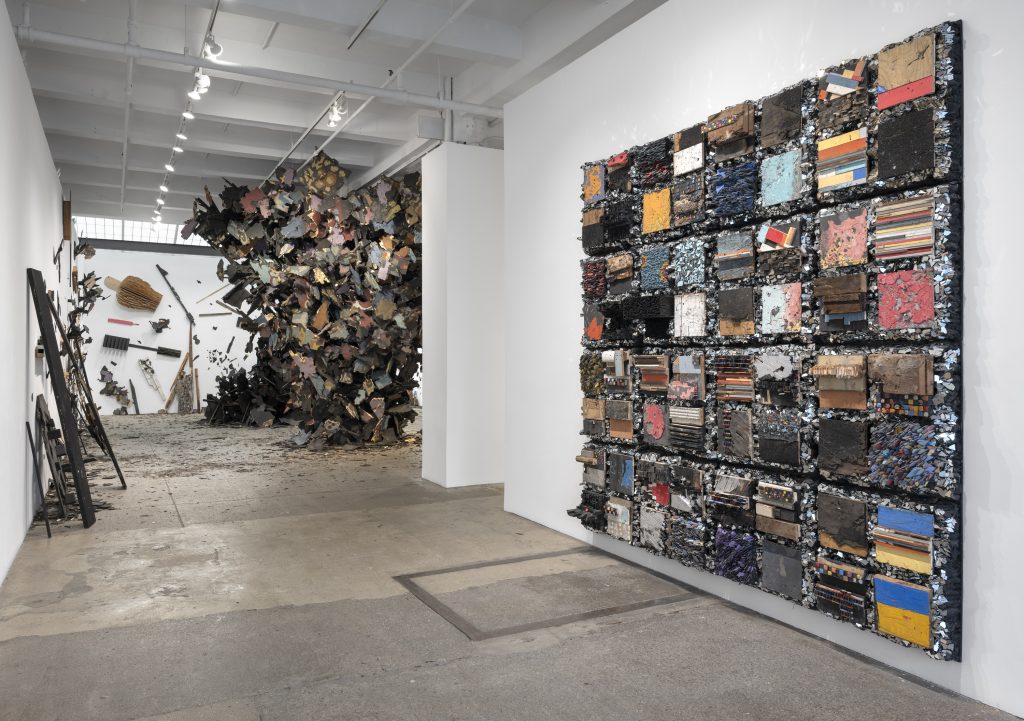Whether in the sculptures of the late Louise Nevelson, the repeatedly monumental creations of the artist and professor Theaster Gates, or work by collage artists like Romare Bearden and Nancy Grossman (the subjects of an exhibition currently at Michael Rosenfeld Gallery in New York), I am fascinated — and captivated — by repurposing in art.
And I found a lot of that very ambition in an engaging, new exhibition of Leonardo Drew at Galerie Lelong & Co., New York.
Leonardo Drew at Galerie Lelong & Co., New York
By far the largest piece in the exhibition is “Number 427” (2024), which is a site-specific installation in which wide-ranging pieces of wood envelop one of the gallery’s exhibition rooms.
Drew’s materials — each piece carrying markers of character and life outside these familiarly white, gallery environs — wrap around the space’s columns, climb its walls, and even extend to the floor. Essentially, you’re stepping into the artwork by entering the room, which feels turned into an entirely new space… even though you know, of course, that the same architecture remains underneath.
Across the exhibition, which also includes a series of similarly captivating artworks hanging on the walls, Drew’s underlying artistic practice involves both repurposed and newer materials, the latter “distressed” by hand by the artist, essentially meaning that he added a layer of wear and tear. In context, it all points the same direction, bringing to the surface an undercurrent of churning destruction that sets whatever it touches towards a one-two punch of dissolution and recreation.
Drew’s artworks bring to mind the real-world forces of decay that weigh on everyday implements of living. The exhibition, though, also charts new paths, packed with monuments to experience and memory’s transformation into something new.
The particular shaping of the many individual pieces of wood comprising “Number 427” evokes the structural creation of a house or similarly purposed gathering space — external, surrounding structures that outline and support our experiences of life. Though sporting jagged edges, the individual, wooden forms were frequently flat planes, à la plywood.
And so, you got the feeling that each piece originated with a structure of expansive character, something altered and given meaning and backstory via each slight alteration from the presence and involvement of everyday people. And you could imagine a variety show of specifics. Perhaps the artwork’s materials are broken pieces of wooden booths at a fairgrounds, remnants of a demolished house, debris from a construction site… or something else.
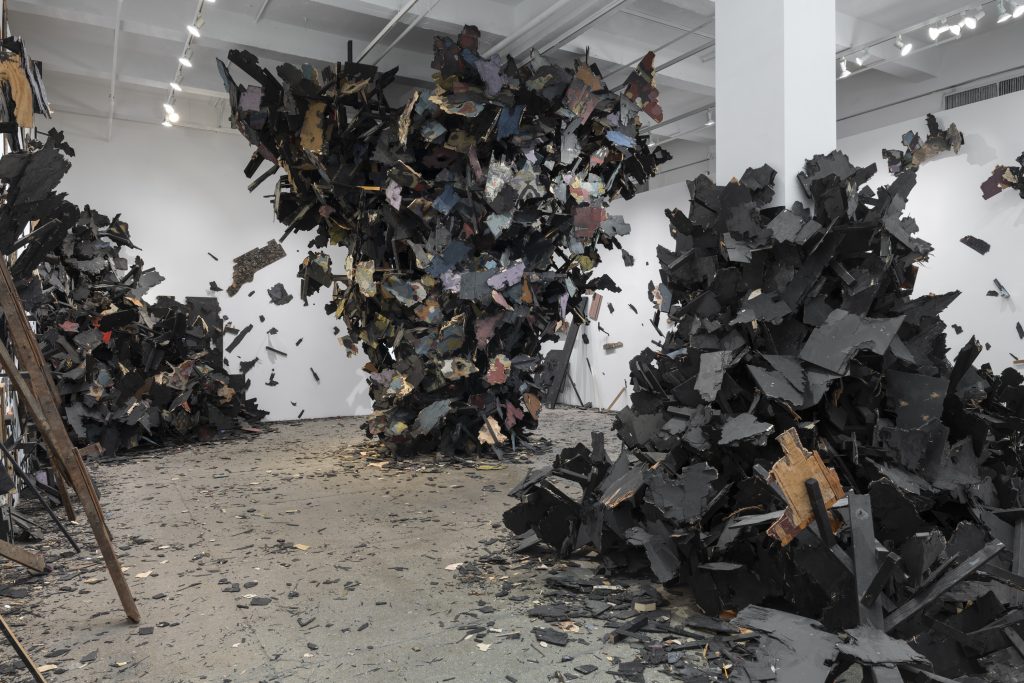
Enveloping Monuments
Drew leaves these elements in view, while simultaneously crafting overarching, sculptural forms that are transformative.
The monumental forms seem to breathe, pulsating with conceptual life as you move from each component piece of wood to larger forms in the piece. There’s a unifying, centering drive that ties Drew’s materials together: an architectural addendum operating outside of rote function but still fueled and expanded by purpose.
Drew communicates character in his assemblage of wood that looks, point by point, ripped from wherever precisely the materials originated. Still inexorably linked to our physical experiences of space, Drew seems to expose an interpersonal through-line that gives any of these constructed spaces any meaning at all, considering how consistently Drew’s work powerfully rises: emotional intertwining — and strain — behind physical space and the always expanding horizon of lived experience.
He seems to put on display what these forces of interpersonal linkage in the world outside of the gallery and studio have been subjected to: campaigns of wanton destruction, whether through the wrecking ball of a natural disaster (which I also contemplated, considering the recent Hurricane Helene) or the enforced end of some lived area. The structures lost to the steamroller of contemporary development: highways, new subdivisions… abandoned family homes.
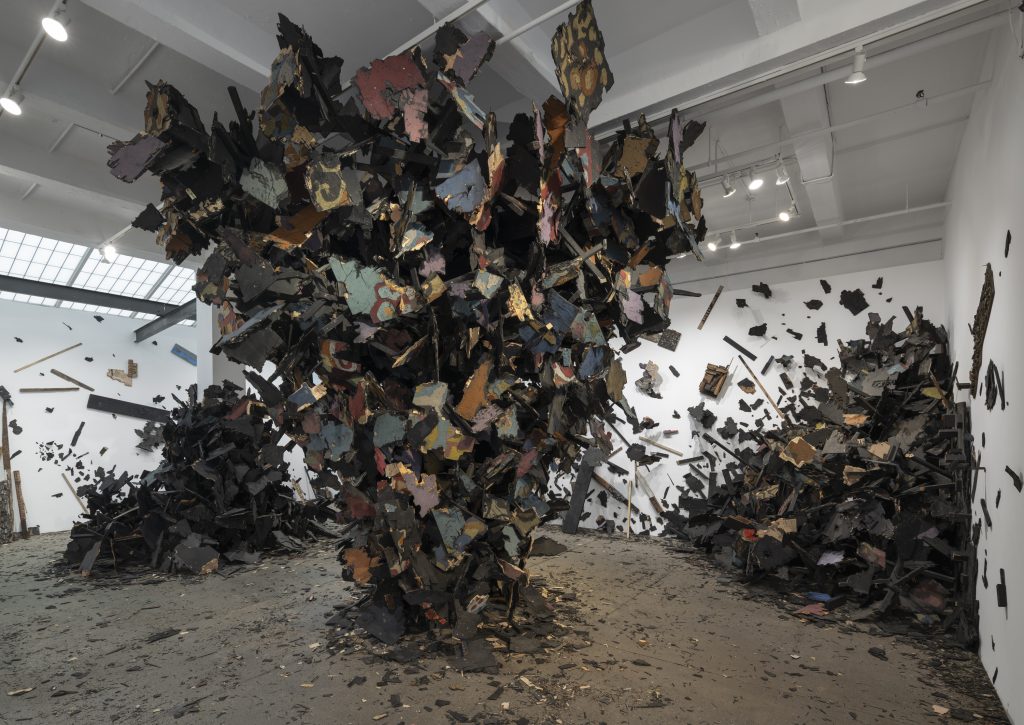
Longing, Yearning, & Careful Construction
Drew’s other works in the exhibition leaned heavily on a grid formation: pieces of wood appearing ripped from their source, arranged in multi-colored, boxy structures, a portion with many composite areas and others with just four to a work. Drew also included glass in at least a couple of these artworks.
And contemplating the visual rhythm of these creations — combined with the monumental installation in the back, there was a key quality, a central force that Drew appeared to be utilizing, shaping, and reforming: longing.
A space where gentle, personal care grows into something tangible. Steady progression into an accumulation of a household’s knick-knacks, the words and conversations shared between two people, the many individual instances of looking for something more closely reflecting your wants. The manner that the passage of time — active in each individual moment and on a broader scale — assembles wildly disparate components into the character of experience: the sentiments of story.
Moving from each wooden piece with the aesthetic appearance of something broken or discarded to the next, you’re left with a pulsating hymn of sorts that rises, you suddenly realize, indefinitely, considering how much on a logistical level is packed into each of the artist’s creations. The felt impact of each piece of wood reverberates outwards via the visual imperfection that Drew cultivated, and that repeats again and again, subsumed into something consistently skyscraping.
Even in the comparatively much smaller works hanging on the wall, Drew’s practice was monumental yet again, reaching with passion. The blocky forms — steeped in order even when there are suddenly dozens to a piece in “Number 414” (2024) — are confidently assertive, creating a fresh, supportive structure where the aesthetic appearance of the materials might leave you expecting a lack of any such thing.
An experience of structure seemingly bashed into pieces but rising anew.
Drew’s exhibition, which is untitled and identified simply by his name, remains on view in New York City through October 19.
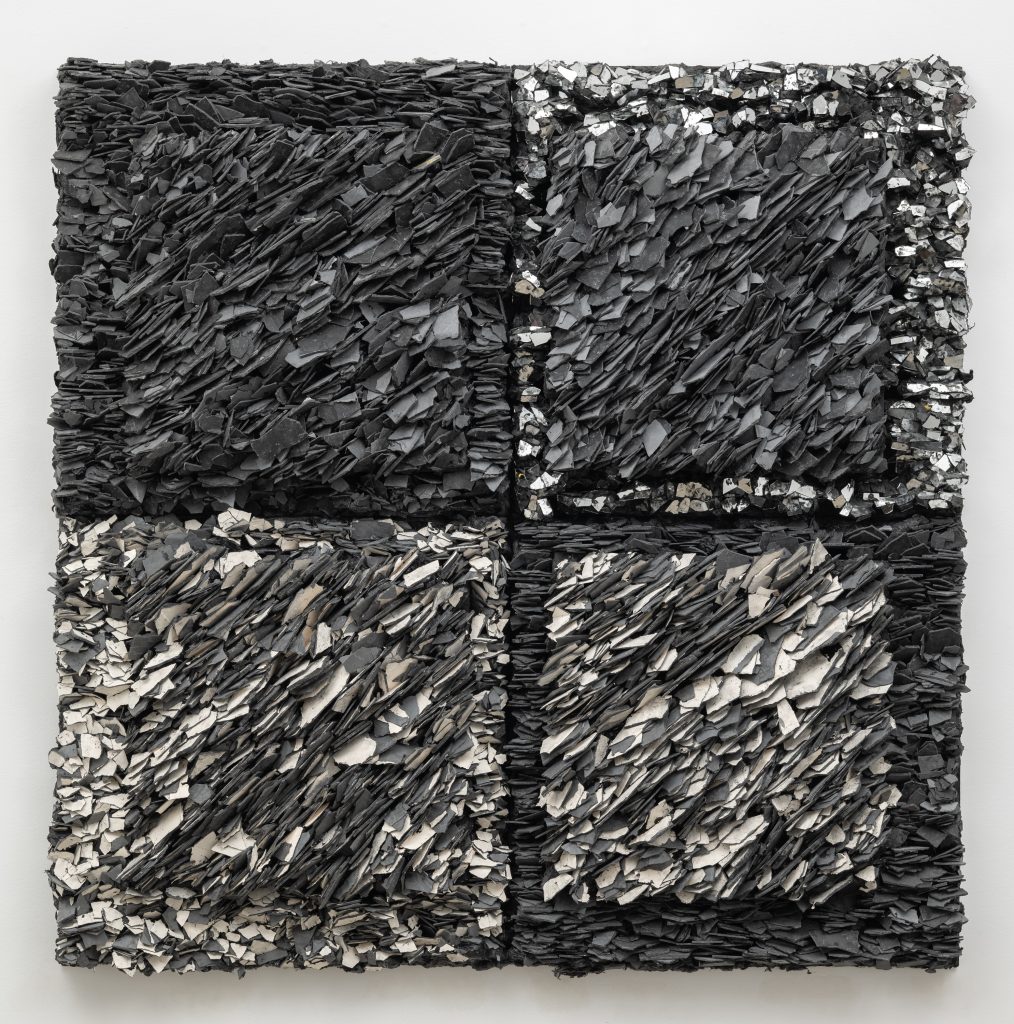
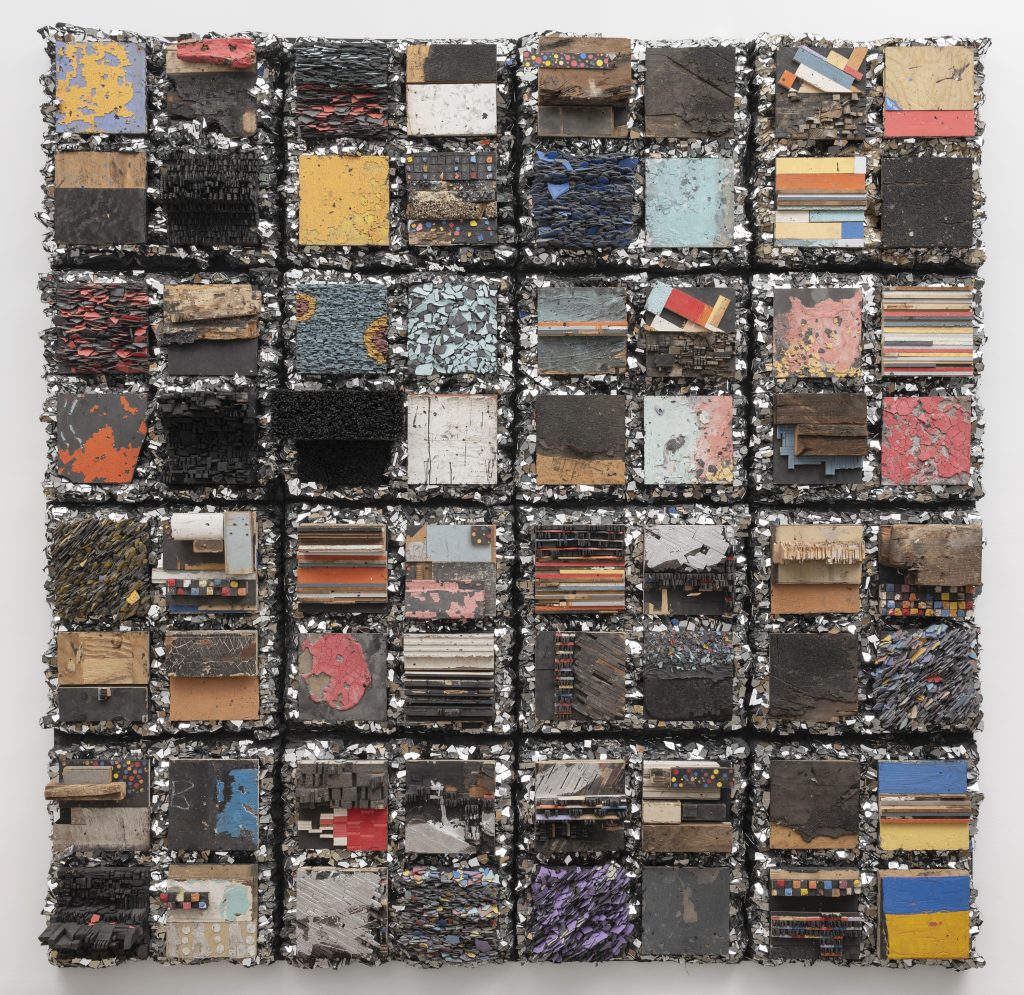
Featured image: Installation view, Galerie Lelong & Co., New York, “Leonardo Drew,” September 5 – October 19, 2024. Courtesy Galerie Lelong & Co.
You may also like
-
Diana Kurz at Lincoln Glenn in New York: A Review of a Shining Art Exhibition
-
Dustin Hodges at 15 Orient in New York City: An Ensnaring Exhibition at an Exciting Gallery
-
Maren Hassinger at Susan Inglett Gallery in New York: Reviewing an Uplifting Art Exhibition
-
Enzo Shalom at Bortolami in New York City: Reviewing an Entrancing Exhibition of Paintings
-
“Ben Werther: Townworld” at Amanita in New York City: Reviewing a Richly Memorable Art Exhibition
